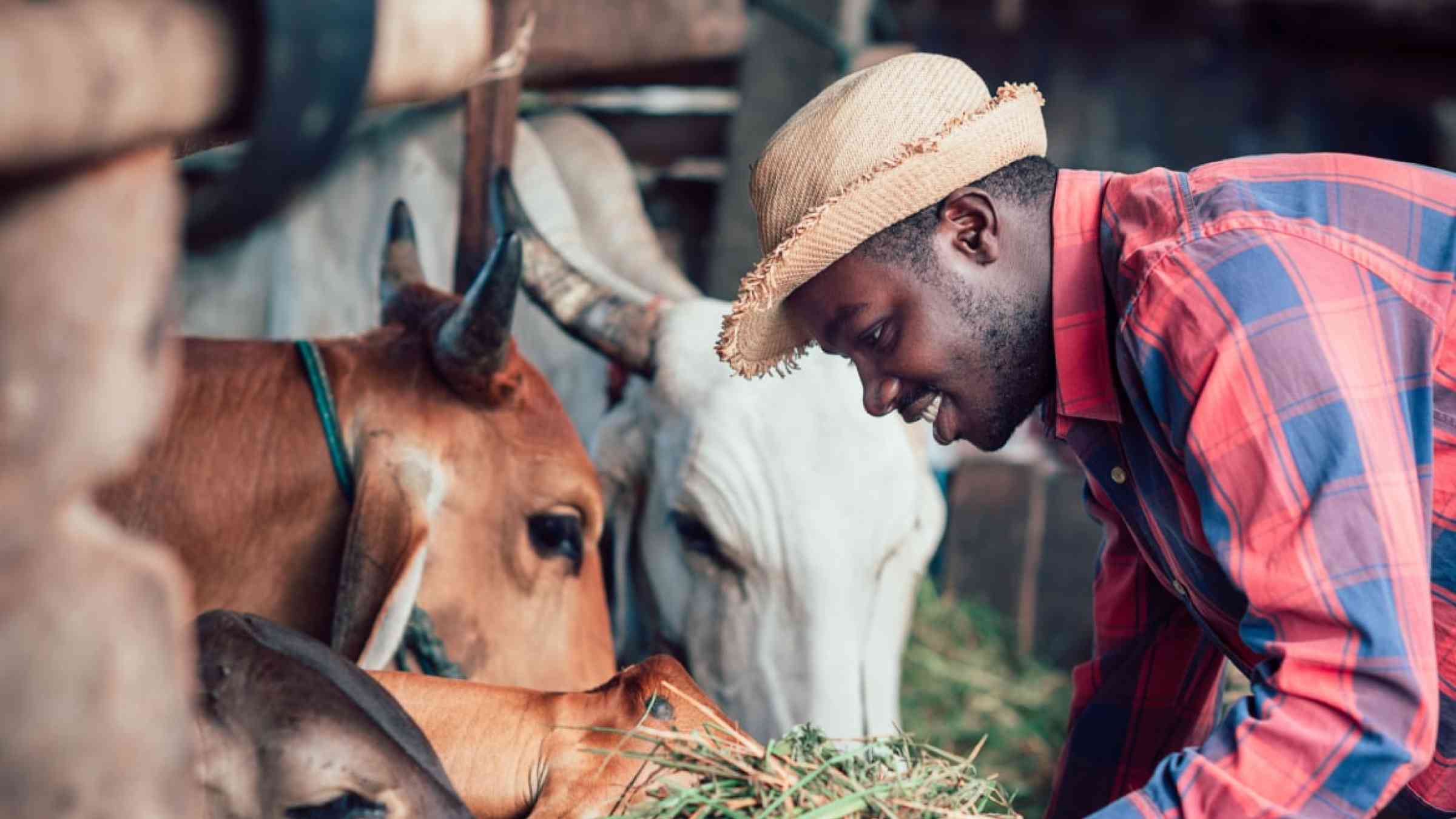Climate change means farmers in West Africa need more ways to combat pests

The link between climate change and the spread of crop pests has been established by research and evidence.
Farmers are noticing the link themselves, alongside higher temperatures and greater variability in rainfall. All these changes are having an impact on harvests across Africa.
Changing conditions sometimes allow insects and diseases to spread and thrive in new places. The threat is greatest when there are no natural predators to keep pests in check, and when human control strategies are limited to the use of unsuitable synthetic insecticides.
Invasive pests can take hold in a new environment and cause very costly damage before national authorities and researchers are able to devise and fund ways to protect crops, harvests and livelihoods.
Not about breaking news. Not about unfounded opinions.
Early research into biological control methods (use of other organisms to control pests) shows promise for safeguarding harvests and food security. Rapid climate change, however, means researchers are racing against time to develop the full range of tools needed for a growing threat.
The most notable of recent invasive pests to arrive in Africa was the fall armyworm, which spread to the continent from the Americas in 2016.
Since then, 78 countries have reported the caterpillar, which attacks a range of crops including staples like maize and has caused an estimated US$9.4 billion in losses a year.
Read more: Exploring the best tactics to combat fall armyworm outbreaks in Africa
African farmers are still struggling to contain the larger grain borer, or Prostephanus truncatus Horn, which reached the continent in the 1970s. It can destroy up to 40% of stored maize in just four months. In Benin, it is a particular threat to cassava chips, and can cause losses of up to 50% in three months.
It’s expected that the larger grain borer will continue to spread as climatic conditions become more favourable. African countries urgently need more support and research into different control strategies, including the use of natural enemies, varietal resistance and biopesticides.
My research work is at the interface between plants, insects and genetics. It’s intended to contribute to more productive agriculture that respects the environment and human health by controlling insect pests with innovative biological methods.
For example, we have demonstrated that a species of insect called Alloeocranum biannulipes Montr. and Sign. eats some crop pests. Certain kinds of fungi (Metarhizium anisopliae and Beauveria bassiana), too, can kill these pests. They are potential biological control agents of the larger grain borer and other pests.
Improved pest control is especially important for women farmers, who make up a significant share of the agricultural workforce.
In Benin, for example, around 70% of production is carried out by women, yet high rates of illiteracy mean many are unable to read the labels of synthetic pesticides.
This can result in misuse or overuse of chemical crop protection products, which poses a risk to the health of the farmers applying the product and a risk of environmental pollution.
Moreover, the unsuitable and intensive use of synthetic insecticides could lead to the development of insecticide resistance and a proliferation of resistant insects.
Biological alternatives to the rescue
Various studies have shown that the use of the following biological alternatives would not only benefit food security but would also help farmers who have limited formal education:
Natural predators like other insects can be effective in controlling pests. For example I found that the predator Alloeocranum biannulipes Montr. and Sign. is an effective biological control agent against a beetle called Dinoderus porcellus Lesne in stored yam chips and the larger grain borer in stored cassava chips. Under farm storage conditions, the release of this predator in infested yam chips significantly reduced the numbers of pests and the weight loss. In Benin, yams are a staple food and important cash crop. The tubers are dried into chips to prevent them from rotting.
Strains of fungi such as Metarhizium anisopliae and Beauveria bassiana also showed their effectiveness as biological control agents against some pests. For example, isolate Bb115 of B. bassiana significantly reduced D. porcellus populations and weight loss of yam chips. The fungus also had an effect on the survival of an insect species, Helicoverpa armigera (Hübner), known as the cotton bollworm. It did this by invading the tissues of crop plants that the insect larva eats. The larvae then ate less of those plants.
The use of botanical extracts and powdered plant parts is another biological alternative to the use of harmful synthetic pesticides. For example, I found that botanical extracts of plants grown in Benin, Bridelia ferruginea, Blighia sapida and Khaya senegalensis, have insecticidal, repellent and antifeedant activities against D. porcellus and can also be used in powder form to protect yam chips.
My research also found that essential oils of certain leaves can be used as a natural way to stop D. porcellus feeding on yam chips.
I’ve done research on varietal (genetic) resistance too and found five varieties of yam (Gaboubaba, Boniwouré, Alahina, Yakanougo and Wonmangou) were resistant to the D. porcellus beetle.
Next generation tools
To develop efficient integrated pest management strategies, researchers need support and funding. They need to test these potential biocontrol methods and their combinations with other eco-friendly methods in farm conditions.
Read more: No perfect solution: Africa's smallholder farmers must use both traditional and new practices
Investing in further research would help to bolster the African Union’s 2021–2030 Strategy for Managing Invasive Species, and protect farmers, countries and economies from more devastating losses as climate change brings new threats.
Initiatives like the One Planet Fellowship, coordinated by African Women in Agricultural Research and Development, have helped further the research and leadership of early-career scientists in this area, where climate and gender overlap.
But much more is needed to unlock the full expertise of women and men across the continent to equip farmers with next generation tools for next generation threats.
![]()